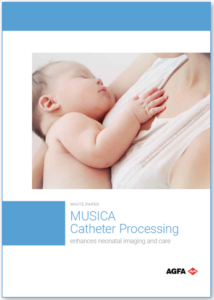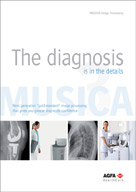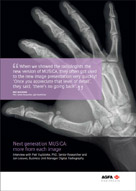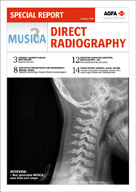DOSE REDUCTION
Agfa’s digital radiography solutions are designed according to the ALARA principle (as low as reasonably achievable) to deliver the optimum balance between low radiation dose and high image quality, while providing the tools to monitor patient exposures.
Your smallest patients are a big priority at Agfa. Children are more sensitive to radiation and its cumulative effects.
Yet, over the course of treatment premature infants can undergo as many as 30-40 examinations, and dose management is an important consideration.
We design our dedicated pediatric and neonatal digital radiography solutions to deliver the optimum balance between low radiation dose and high image quality.
We’ve been a world leader in medical imaging for over 100 years, so you can be confident in our expertise, for image quality and dose control.
UP TO 60% LESS DOSE
Advanced technologies are making it happen.
Our dose-efficient Cesium detectors are available with both direct radiography (DR) and computed radiography (CR) systems.
They can help you reduce dose for pediatric and neonatal applications up to 60%, depending on the examination and conditions.*
Our patented MUSICA image processing software plays a role, too, providing excellent image quality and greater diagnostic confidence with low-dose pediatric images.
FOCUS ON THE PATIENT WITH MUSICA
Agfa HealthCare’s patented MUSICA image processing offers excellent image quality and greater diagnostic confidence for low-dose images.
Radiographic images taken at a lower dose result in higher noise content.
MUSICA image processing with fractional multiscale denoising (FMD) can achieve active noise reduction based on selective and fractional attenuation with preservation of the fine and subtle image structures.
* Testing with board certified Radiologists has determined that Cesium Bromide (CR) and Cesium Iodide (DR) Detectors when used with MUSICA processing can provide dose reductions between 50 to 60% when compared to traditional Barium Fluoro Bromide CR systems. Contact Agfa for more details.
MUSICA Catheter Processing enhances neonatal imaging and care
space
Study shows MUSICA‘s Fractional Multiscale Processing technology improves catheter visualization for newborns, improving reading quality and reducing potential risks of catheter placement
A study evaluating the ability of image processing to improve the visualization of central catheter tip positioning in newborns was recently published in BMC Medical Imaging. The authors found that Agfa’s MUSICA Catheter Processing with Fractional Multiscale Processing (FMP) technology significantly improved the perception of low contrast PICC line tips in digital chest X-rays, compared to standard image processing.
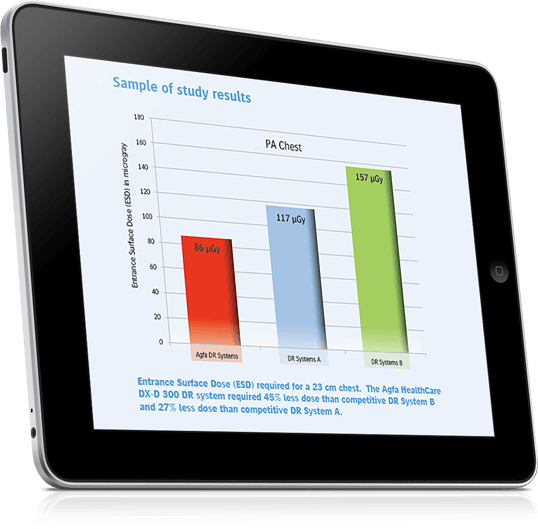
“Dose reduction has become a very compelling story”
“All radiologists need to be cognitive of patient dose and aware that patients are becoming better informed and will increasingly ask questions.”
Dr Steven Mendelsohn
Chief Executive Officer/Medical Director,
Zwanger-Pesiri Radiology, New York, USA
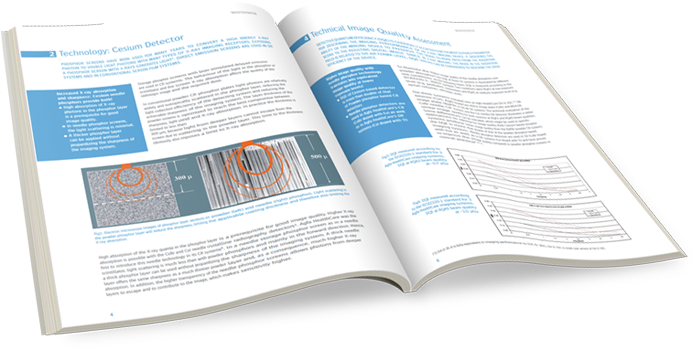
Dose reduction potential through MUSICA
Didn’t find what you’re looking for?
Fill in the form below, and we’ll get back to you with a tailor-made answer.
Please provide a detailed description of the item you were looking for.



